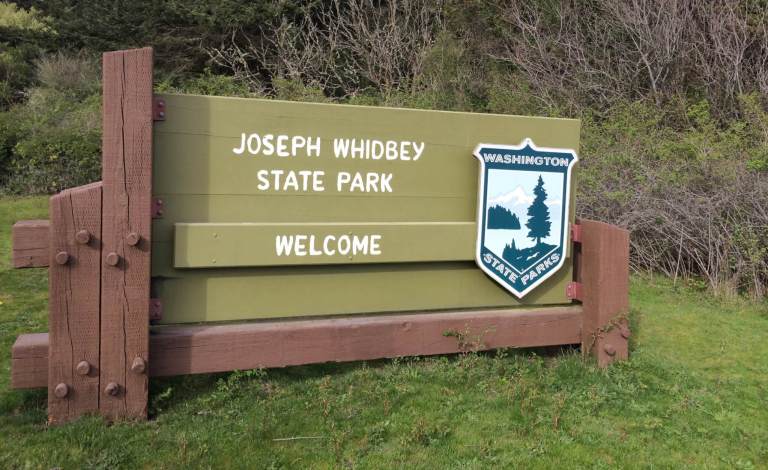“Right there,” MizFitz said, pointing to somewhere in the steel blue expanse before us.
“Where?” I squinted, frustrated by my inability to see the whale spouts she had spotted.
“There!” she said. Finally, I saw it: two plumes of mist rising in the channel off the beach at Joseph Whidbey State Park.
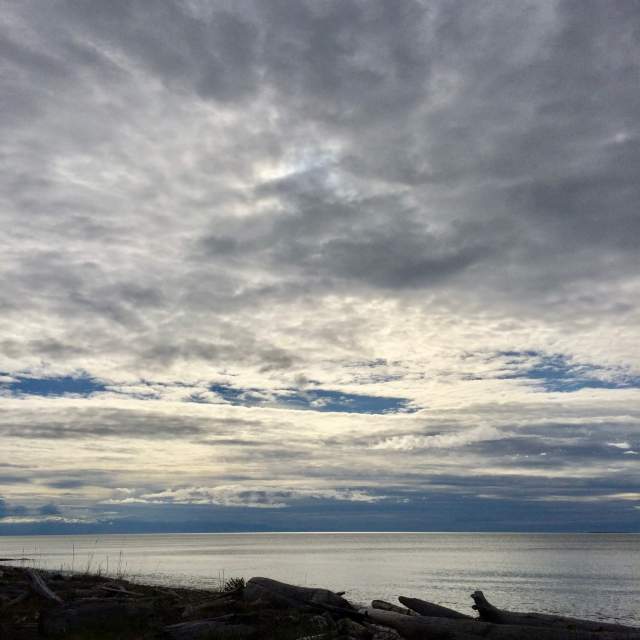
It was a chilly day, with high clouds crowding in overhead. We were exploring Whidbey Island, Washington’s largest and the fourth-largest in the US. Whidbey’s personality is split between its bucolic, rolling farmland and US Naval Air Station Whidbey, which operates two airfields on the island. It’s also home to seven (count ’em!) state parks, including Joseph Whidbey, who’s also the island’s namesake.
Another British seafarer dropping names
Like so many places in the Puget Sound region, Whidbey Island is named for a seaman aboard George Vancouver’s ship Discovery, which charted the area in 1792. Vancouver assigned names to geographic places almost frenetically, labeling more than 75 features during his month in the area. After circumnavigating what he initially thought was part of the mainland, Joseph Whidbey got the big island named for him. Peter Puget was a lieutenant aboard the ship and got the sound. Vancouver also named Mount Rainier, Mount Baker, Port Townsend, Hood Canal, and Vashon Island, among dozens of others. Predictably, any existing indigenous or Spanish names were ignored.
Small park, big beach
Joseph Whidbey State Park’s outstanding feature is its curving beach, just over a half-mile long. On most days, you can see the San Juan Islands and Vancouver [(again with the names)] Island. In winter, this is a prime storm-watching spot.
MizFitz’s dog, Dewey, is a big galoot with an endearing personality and more strength than is good for him. He loves the beach, and eagerly pulled MizFitz along as I followed, picking my way among large, round cobbles. Just as I was about to suggest we turn back, because the cobbles seemed like a perfect place to fall hard and get hurt, MizFitz fell hard and got hurt, spraining her ankle. I grabbed Dewey’s leash and she limped back on the grass above the tideline.
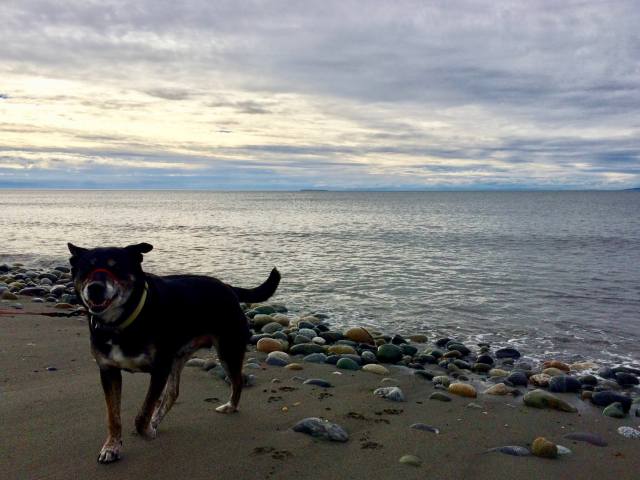
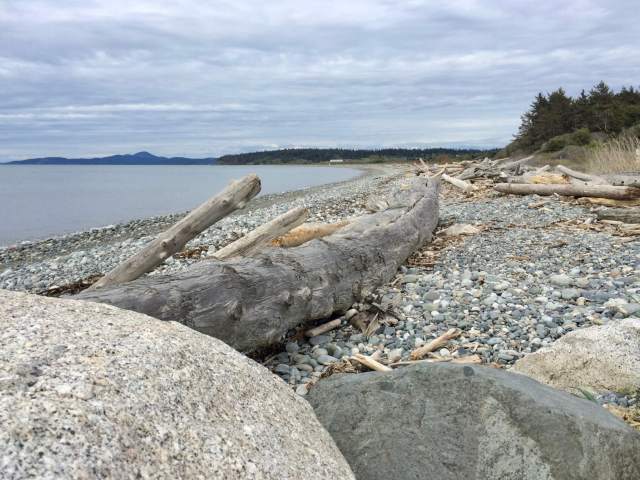

Forest camping, for boaters only
I took a quick detour to check out the small forest on the bluff above the beach. Boaters on the Cascadia Marine Trail can utilize one primitive campsite tucked into the woods there. A trail beckoned, but it would have to wait.


Return on a bluebird day
A couple of weeks later, I was back on Whidbey, along with Dewey and MizFitz (ankle improving nicely, thank you for asking), and we stopped at the state park to check out the upper portion.
A loop trail winds through large meadows and small wooded areas, providing plenty of spots to plunk on a bench and watch birds or, if you’ve timed it wrong, Navy Growler jets overhead. Flight training times are posted online, and residents know to plan accordingly. Although I didn’t see fighters over the state park, I did see them during my visit to the island and they are painfully loud, as in, my ears literally hurt. Jet noise is a major bone of contention for many island residents and also for fans of Olympic National Park. The Olympic Peninsula is a seven-mile ferry ride from the island, and the jets routinely fly over its famously quiet wilderness, startling visitors and disturbing wildlife.
The webpage about Joseph Whidbey State Park points out that the state doesn’t have any say in the Navy’s jet trainings, but does “share visitor concerns” with the Naval Air Base.


The trail is pretty, and we saw a couple of mountain bikers and walkers along the way. After a quick repeat stop at the beach — I never tire of seeing Puget Sound in different moods — we called it a day. I’m looking forward to exploring the other six state parks on Whidbey!
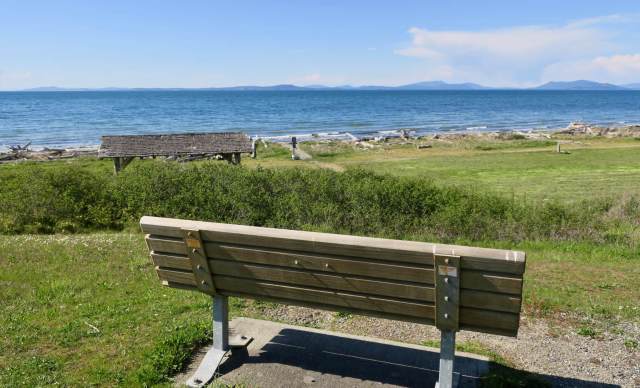

Fast facts about Joseph Whidbey State Park
- 112-acre, day-use park, open April-September
- $10 daily parking pass (buy the annual Discover Pass, a bargain at $30)
- 3,100-foot beach
- hiking trails
- picnic tables, picnic shelter, restrooms
- one Cascadia Marine Trail boat-in campsite
- park map
- park brochure
